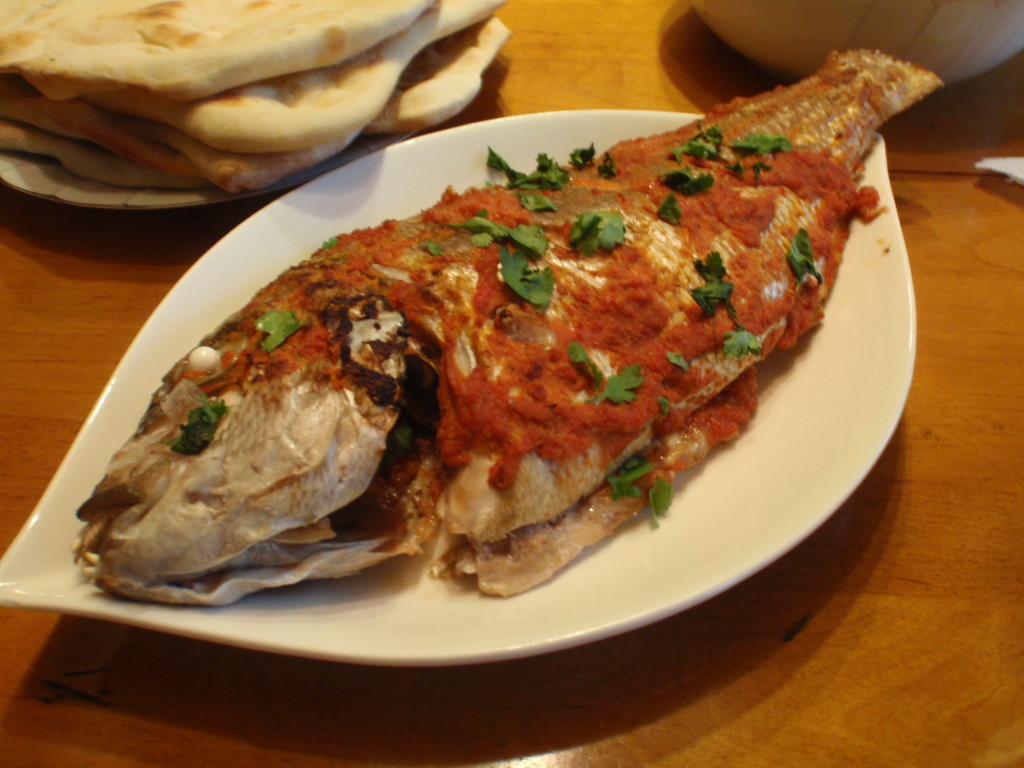On Sunday supplement
Food and Wine
It’s a common refrain to hear that porteños don’t eat or like fish. And there are certainly fewer in the way of seafood restaurants in this city than those serving up the national beef. No question some of that is the long standing gaucho mystique and tradition of the open range and great hunks of meat cooked up over open flame. But part of it is based on decades or longer of a simple lack of supply of good quality fish and shellfish to the capital.
Until not that long ago a fish would find itself caught somewhere off the southern coasts, ranging from Mar del Plata down to Ushuaia. From there it was plopped unceremoniously atop a bed of ice along with a number of its brethren, a crate of iced down fish got shoved into the back of an unrefrigerated truck and a driver drove from hundreds or thousands of kilometers to BA in a manner that would make a local colectivo “pilot” jealous. Still, it could take a day or two to get here, get processed through the Mercado Central, and distributed to retail outlets – by then, the chances of freshness were dimming rapidly.
But recent years have seen the implementation of refrigerated and/or frozen transport in controlled containers and trucks, and even crates of the best of the catch showing up in the belly of aircraft arriving from points south. With that, and a general tendency towards a more varied and perhaps even healthier diet, fish is showing up more and more on menus, and in more and more homes, as a choice for dinner.
Now, you can pick up your typical fillet of one fish or another at any local fish store, and perhaps we’ll get to some interesting ways to prepare one or another of those. In fact, I feel a gatuzo a lo vasco coming on in a future column. But for the moment, I wanted to look at a classic local preparation of pescado al horno relleno – oven-baked stuffed fish. It’s a simple dish, a whole fish is butterflied open, sprinkled with sauteed onions, scallions, salt, pepper and thyme, then it’s closed back up, topped with bread crumbs and lemon juice, and classically, and, to my mind unfortunately, served up with “abundant white sauce”, along with, perhaps, a vegetable pudding of carrots or squash.
Until we get to that heavy bechamel it’s all sounding fairly delicious, but there’s something about a heavy, floury, milk based sauce ladled over a fish that sounds like we’re just trying to cover up the fact that it’s a fish on the table. Even the French are not as enamored of bechamel as the Argentines are. So here’s one of my favorite whole fish preparations – easy to make, fresh and vibrant flavors.
Baked Whole Fish
6 garlic cloves
1½ teaspoons salt
2 fresh red or green long chilies, seeded
1 large tomato, peeled and seeded
3 tablespoons tomato paste
1 teaspoon cumin seeds
—–
¼ cup olive oil
salt and pepper
1 whole sea bass (approx. 6 pounds, or slightly over 2 kilos), scaled, gutted and cleaned
Cilantro for garnish
First the fish – “sea bass”. How do we find one here? There are several options in the bass family that will work well for this dish – corvina, mero or chernia would be my first choices.
Preheat oven to 180°C. In a small dry pan lightly toast the cumin seeds until they start to smell aromatic and pop a little. Remove from the pan and slightly crush them. Make a paste of the first six ingredients in a small food processor, blender, or even a mortar and pestle.
Rinse and pat the fish dry with paper towels. Cut three slits in the skin across the fish on both sides, coat with olive oil, sprinkle with salt and pepper. Lay it in a baking pan and coat well with the paste mixture (on both sides). Bake for one hour, approximately, until done. Serve on a platter with a handful of cilantro leaves scattered across it. This can also be done with the fish filleted and laid side by side in the pan, though the baking time will be considerably less – just bake until the fillets are cooked through but not dried out – roughly 15-20 minutes.
And ditch the white sauce.
A series of recipes and articles that I started writing for the Buenos Aires Herald Sunday supplement, Food & Wine section, at the beginning of 2012. My original proposal to them was to take local favorite dishes and classics and lighten them up for modern day sensibilities. We’re not talking spa or diet recipes, but at the very least, making them healthier in content, particularly salt, fat and portion size. As time went by, that morphed into a recipe column that, while emphasizing food that is relatively “good for you”, wasn’t necessarily focused on local cuisine. At the beginning of 2013 I decided to stop writing for them over some administrative issues, but it was fun while it lasted.
